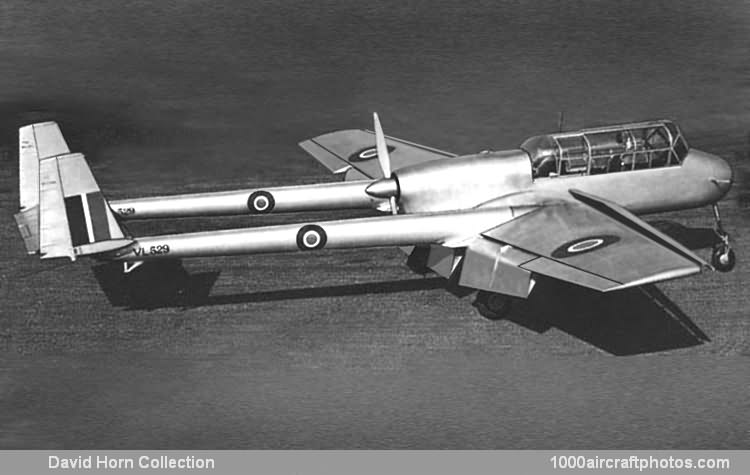Designed under George Cornwall's direction, the all-metal J.C.6 was sheathed with Alclad and with fabric covering for the control surfaces. Construction in small, self-contained, lightweight units made it possible to dismantle the machine easily, and the Lockheed levered-suspension main wheels and Lockheed sliding-leg nose wheel were non-retractable. Under the large jettisonable glazed canopy, swept outwards at the top for improved downwards vision, the pilot and observer were seated back to back. The pilot handled all operational controls and acted as artillery spotter, while the observer's sole duties were to recharge the camera magazines and note enemy action to the rear of the machine.
The 240 hp de Havilland Gipsy Queen 33 six-cylinder in-line engine drove a two-bladed de Havilland constant-speed 2/1000/2 propeller and, started by a Plessey Cartridge Starter Type S.3 Mk.11, received its cooling air via a large intake beneath the nacelle; the intake incorporated ducts for cylinder and oil cooling and for carburetor and cabin air. A trunk carried the air to the cylinders, exhausting through an annular orifice around the propeller hub. Flaps were fitted inboard of the ailerons and leading edge slots stretched across the full-span. Fuel was contained in two center section Marflex crash-proof tanks of 25 gal (95 l) each, one permanent and the other auxiliary; oil was housed in a 5.5 gal (21 l) crash-proof tank.
The silver VL529's first flight was made at Heston by the firm's Chief Test Pilot Flight Lieutenant Ralph Sylvanus Munday and the machine was exhibited at the eighth SBAC show at Radlett during September 9-12, 1947. With 45 hr 20 min flying time logged, VL529 arrived at A&AEE Boscombe Down on May 13, 1948 for trials, remaining there for just over four months until September 29 and completing a further 38 hr 10 min flying while at the Establishment.
Report No. A&AEE/850 Part 1 detailed the engineering appraisal, concluding that the aircraft was very well designed for easy servicing, adequate inspection panels were provided, the engine and accessories were well sited and accessible, and the power plant was changed easily and quickly. Suggestions for modifications included attention to the engine cowlings which had cracked extensively during handling trials, improved siting of the throttle which was too near the cockpit side and most awkward to handle, and relocation of the tail trim wheel which was so close to the pilot's seat that it was difficult to operate, particularly as flying clothing spread over the seat obscured the indicator and the control. nose wheel shimmy was experienced during runway take offs.
Ultimately the A.2/45 requirement was met by the Auster A.O.P. and to VL529 went the dismal distinction of being the last Heston Aircraft design to be built. Subsequently the company changed its name to Hestair Ltd., to operate as aeronautical and general engineers."
